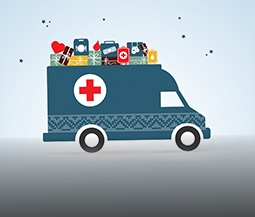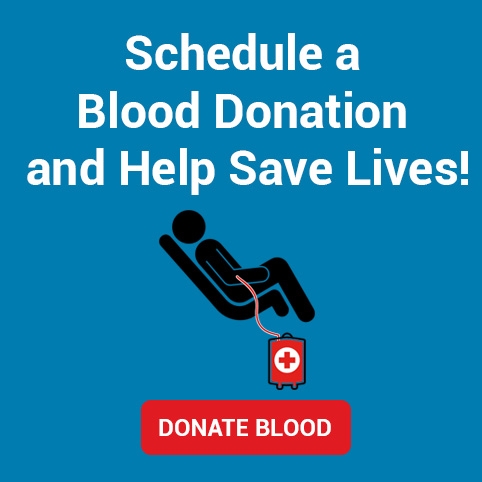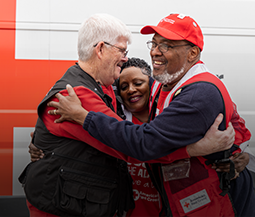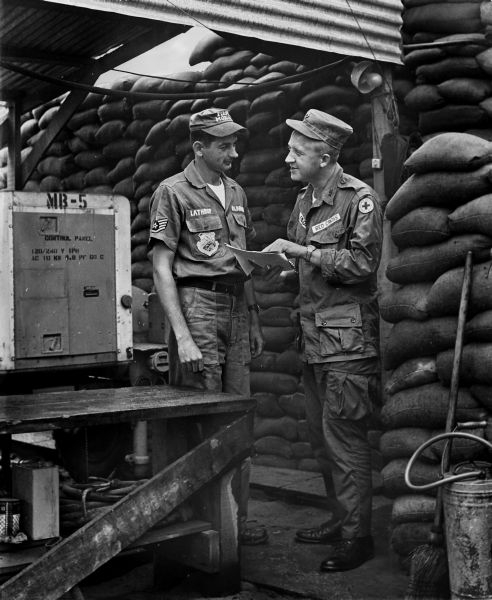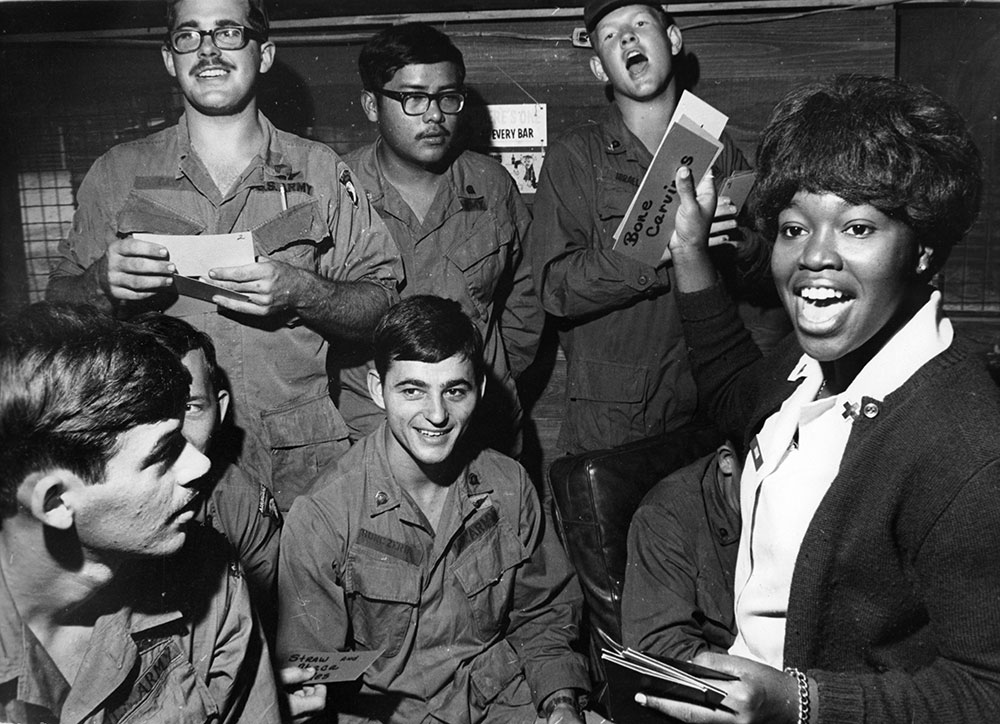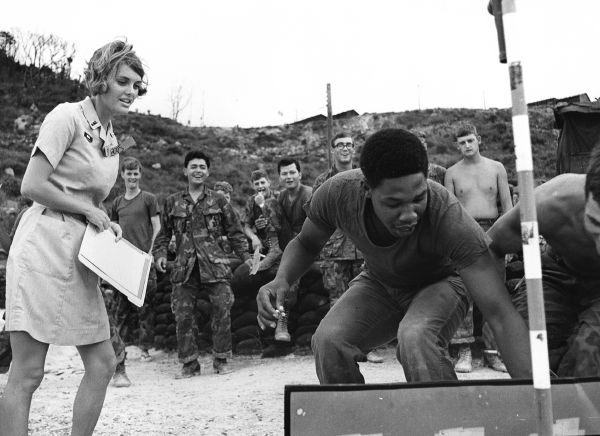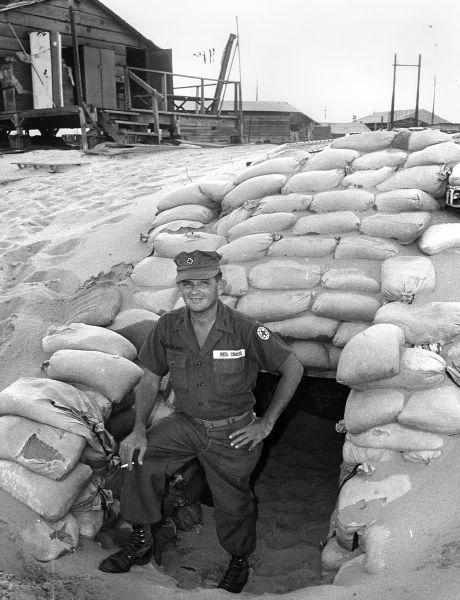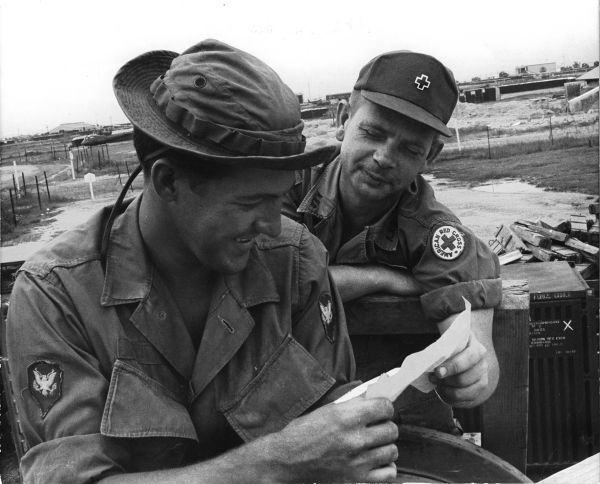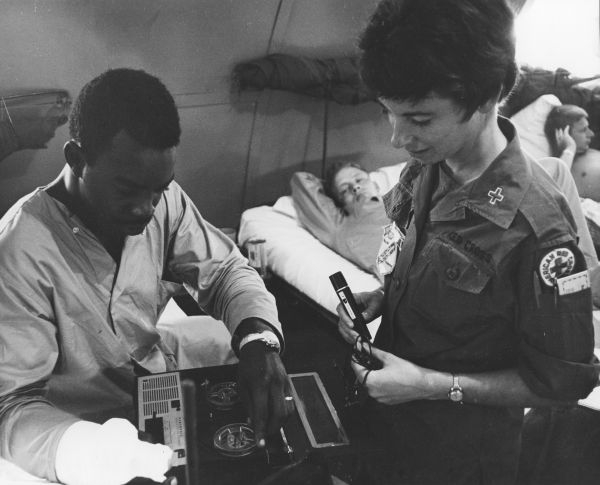March 29 is National Vietnam Veterans Day, a time to remember the service and sacrifice of those who served in Vietnam, along with their families. 2.7 million U.S. service members served in Vietnam. More than 304,000 were wounded, 2,500 were held as prisoners of war, more than 1,200 are still missing in action and 58,000 lost their lives, memorialized on a black granite wall in Washington, D.C.
National Vietnam Veterans Day is also a day to highlight the service of support organizations during the war. The American Red Cross is one of those support organizations, deploying staff to Vietnam to provide services to U.S. troops during the war, sharing the dangers of the conflict alongside the military personnel they were there to serve. Throughout the time Red Cross Service to the Armed Forces (SAF) workers were in Vietnam, five Red Cross staff members lost their lives and many others were injured
DONUT DOLLIES Perhaps the best known of the Red Cross staff in Vietnam were the Donut Dollies. At the request of military authorities, the Red Cross sent teams of young female college graduates to Vietnam beginning in 1965 to conduct light entertainment and audience participation programs for service personnel. They also served refreshments to the troops in traveling club mobiles. These Donut Dollies provided their services at stationary Red Cross recreational centers and traveled by helicopter, truck and jeep to bring a touch of home to troops in the field. In the peak year of 1969, 110 young women operated 17 units in Vietnam, reaching an estimated 300,000 servicemen each month that year.
RED CROSS IN VIETNAM During the war, Red Cross assistance in Vietnam focused on three main areas – on military installations, in military and veterans’ hospitals and supplemental recreational activities. Red Cross staff served on military installations throughout South Vietnam, providing help with personal and family problems, help in emergency situations and aid with communications to and from home. At its peak in 1969, the Red Cross operated 67 field stations in Vietnam staffed by more than 200 field personnel.
Troops in military hospitals received the same help from the Red Cross as those in the field, as well as access to recreational activities. The Red Cross also assisted the medical staff in care and treatment of the injured and collaborated with military authorities in developing drug-abuse treatment programs for addicted service personnel.
The majority of hospital activities occurred outside of Vietnam since most of the injured were evacuated as soon as possible to medical facilities in other parts of the Southeast Asia. In 1969, 60 Red Cross staff served at 20 hospitals and two hospital ships in Vietnam, while more than 3,000 Red Cross staff and trained volunteers served in hospitals in Japan, the Philippines, Okinawa, Guam, Korea and Hawaii where the seriously ill and wounded were sent before being transported home.
During the years of American combat activity, the Red Cross handled more than two million emergency communications between members of the military and their families. Red Cross field directors and chapter staff at home assisted an average of almost 29,000 troops each month with personal and family problems. An average of over 280,000 a month participated in recreation activities at Red Cross centers and in programs in Vietnam and neighboring countries.
HELP ON THE HOMEFRONT Back in the United States, Red Cross teams provided services on military installations and helped the ill and injured at military and veterans’ hospitals. In addition to emergency communications, employees and volunteers at Red Cross chapters helped military families with counseling and help in applying for government benefits and emergency financial assistance. They saw future troops off at induction points, visited families of new recruits, organized military wives’ clubs, sponsored family nights, and recorded and sent thousands of “Voices from Home” tape recordings to those serving overseas.
The Red Cross offered two special programs for military personnel and their families during the war. One was a “Free Phone Call Home” to all injured military personnel on their return to the United States. The Red Cross funded more than 112,400 of the calls during the Vietnam conflict. As part of the “Shop Early” program, chapter volunteers assembled and sent special Christmas gift packets to every serviceman and woman in Vietnam. Between 1966 and 1972, more than 2,950,000 of these Yuletide packages were dispatched.
POW SUPPORT As prisoner exchanges began at the end of the war, North Vietnam accepted American Red Cross POW packets for men about to be released. Red Cross workers and volunteers participated in "Operation Homecoming," a special activity at Clark Air Force Base in the Philippines and at 31 domestic military hospitals, welcoming the POWs home and providing them with personal comfort items and recreational services.
The Red Cross also participated in the "Write Hanoi" campaign, sending more than 2,000 letters to the International Committee of the Red Cross (ICRC) in Geneva, Switzerland for delivery to North Vietnamese authorities. The letters requested intervention on behalf of captured and missing U.S. servicemen. The Red Cross also sent almost 20,000 letters from the families of prisoners for forwarding by the North Vietnamese to the POWs, and shipped food parcels intended for U.S. prisoners in North Vietnam.
During the struggle in Southeast Asia, more than three million people lost their lives, including 58,000 Americans. At the peak of the United States’ participation in Vietnam, more than 500,000 U.S. military personnel were involved.



